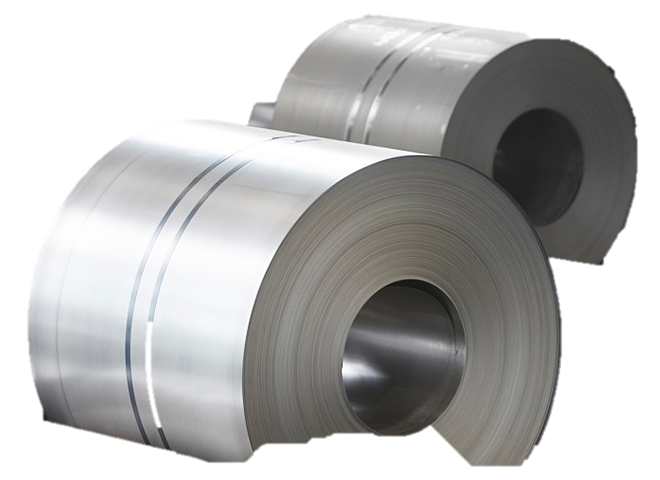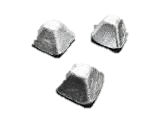- - Contribute to the creation of a clean air environment by maintaining a level of 20% of the permissible air pollutant emission standard.
- - Lead low-carbon green growth by reducing annual energy use and greenhouse gas emissions by 5%.
- - Contribute to the recycling of resources by reducing waste by 5% and achieving a 95% recycling rate.
| Item | Air pollutant emission concentration | Energy usage (Per unit of product) |
Greenhouse gas emissions (Per unit of product) |
Waste generation (Per unit of product) |
Waste recycling rate |
||
|---|---|---|---|---|---|---|---|
| Dust (Legal standard: 30 mg/S㎥) |
NOx (Legal standard: 150 mg/S㎥) |
SOx (Legal standard: 200ppm) |
|||||
| 2021 | 6 mg/S㎥ or less | 30 mg/S㎥ or less | 40 ppm or less | 0.089 Toe/t or less | 0.237 CO2(t) or less | 6.7 Ton or less | 95 % or more |
| 2022 | 0.100 Toe/t or less | 0.232 CO2(t) or less | 6.0 Ton or less | ||||
| Item | Risk | Opportunity |
|---|---|---|
Packaging

|
- Increased exposure of steel mills to natural disasters due to climate change. - Increased electricity prices due to government energy policies. - Concerns about reducing product output due to strengthened environmental regulations in the steel industry. |
- Strengthening competitiveness by diversifying packaging quality. - Building an eco-friendly image by introducing low-carbon packaging materials. - Strengthening competitiveness by increasing the automation rate of packaging facilities. |
Aluminum deoxidizer

|
- Tightening carbon regulations. - Increased air pollutant generation and tightening regulations due to B-C oil use. - Increased energy costs due to fuel switching (B-C oil→ LNG, etc.). |
- Increased feedstock availability due to stronger recycling policies. - CO₂ reduction due to switch to LNG. - Reduced air pollutant emissions by not using B-C oil. |

| Business |
|---|
|
- Development and distribution of eco-friendly packaging materials. - Development and installation of packaging automation facilities. |
|
- Reducing carbon emissions by 20% in 2030 and 50% in 2040. - Aluminum scrap resource recovery. |
| Environmental regulations | Regulatory risks | Response strategies |
|---|---|---|
| Act on the Integrated Control of Pollutant-discharging Facilities |
- Improving the management and oversight of measuring instruments. - Operation/management of emission and prevention facilities. |
- Install TMS for air pollutant risk management. - Continuous management through budgeting and operation of prevention facilities. |
| Clean Air Conservation Act |
- Pollutant leakage due to corrosion/abrasion, etc. - Proper maintenance of emission facilities. |
- Maintain management, including daily visual observation and periodic bag filter replacement. - Monthly self-measurement of emission facilities and performance maintenance. |
| Waste Control Act |
- Complying with waste storage period requirements. - Sharing hazard information. |
- Comply with the 90-day storage period for general waste and the 45-day period for specified waste. - Create and post hazard information in waste storage areas. |
| Chemical Substances Control Act |
- External leakage when handling hazardous chemicals. - Sharing hazardous chemical handling information. |
- Ensure sealing of hazardous chemical storage and compliance with packaging requirements. - Post MSDS and warning labels and train employees. |
■ Response to climate change
In order to respond actively to climate change, POSCO M-TECH established the 2050 Net Zero Roadmap in May 2022 and developed key strategic directions so as to realize it. We plan to reduce GHG emissions by 20% in 2030 and 50% in 2040 through 'switch to eco-friendly fuel,' 'expansion of new and renewable energy,' and 'R&D of reduction technologies,' while establishing measures to measure and reduce Scope 3 emissions by 2025. In addition, we are increasing energy efficiency with a goal of a 5% improvement in energy use per unit in 2022 compared to 2021. We are also strengthening 'employee engagement' practices with daily carbon reduction campaigns, such as zero paper cups and a digital carbon footprint reduction challenge in 2021, as well as carbon reduction practice challenges by signing an MoU with an application- based social contribution platform.
■ Air pollutant control
POSCO M-TECH is implementing various air quality improvement activities to minimize the negative impact of air pollutants on the environment. We operate a TMS-based emission monitoring system along with dust collection facilities. In addition, we operate an air pollutant monitoring system to monitor legally regulated materials and other fine dust, odors, and impurities that may affect local residents and employees. We are also focusing on making our factories cleaner by increasing dust collection efficiency while implementing responsible maintenance to manage air pollutant collection facilities systematically. As a result of such efforts, the aluminum production department located in the Pohang Steel Complex succeeded in improving the odor caused by volatile organic compounds (VOCs), with the number of odor complaints in the surrounding area having been reduced by more than 30%.
■ Water resource management
Since we have no facilities that generate wastewater at our business sites, the risk of water management and wastewater discharge is considered to be relatively low compared to other manufacturers. Well aware that water management at business sites is an important issue for future sustainable management, however, we are striving to minimize the risk of water shortage by optimizing water management and expanding recycling. We have successfully reduced our domestic water consumption, from 3,839 tons in 2019 to 3,401 tons in 2020 and 3,095 tons in 2021 through a company-wide water saving campaign. We also continue to inspect and improve leaks at our plants to reduce industrial water consumption. To protect water resources and prevent environmental pollution, we have established additional response scenarios for soil and water contamination caused by waste oil leakage and continuously conduct waste oil leakage accident response drills to prevent environmental pollution.
■ Hazardous chemical management
POSCO M-TECH uses only one hazardous chemical: sodium hydroxide (NaOH). It is used for product quality analysis at our aluminum plants. To make our workplace safe from hazardous substances, we operate an MSDS* management system (POSCO Group e-Safety) that enables us to systematically check relevant information from the early stages of contracts, such as supplier bidding, and we educate our employees about it. We are also conducting a chemical risk assessment to evaluate hazardous materials in the workplace and establish measures to reduce them based on data on the hazardousness and exposure of chemicals. * Material Safety Data Sheet.